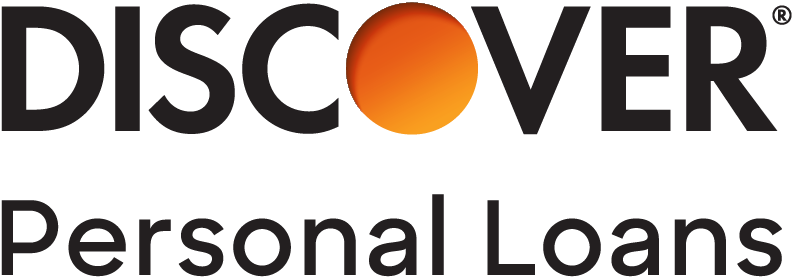When and How to Refinance a Personal Loan

Many or all of the products featured here are from our partners who compensate us. This influences which products we write about and where and how the product appears on a page. However, this does not influence our evaluations. Our opinions are our own. Here is a list of our partners and here's how we make money.
Refinancing a personal loan can help you save money on interest or lower your monthly payments.
Here’s how to refinance a personal loan, when it’s a good idea and what to consider before you refinance.
» MORE: Best personal loan lenders
What does it mean to refinance a personal loan?
When you refinance a personal loan, you replace your existing loan with a new one, either from your current lender or a different one. You use the funds from the new loan to pay off the existing loan, and then you make monthly payments toward the new one.
Refinancing makes the most sense when the interest rate or monthly payments are lower than your current loan.
How to refinance a personal loan
Check current personal loan rates. Personal loan rates don’t change often, and when they do they don’t change by much, but it’s a good idea to check whether current rates are lower or higher than usual. If average personal loan rates are higher than when you first borrowed, it may be difficult to get a good rate.
Pre-qualify for a new personal loan. Pre-qualify with multiple lenders to see the rate and terms you can get on a new loan. Pre-qualifying doesn’t affect your credit score, and it lets you compare new loan offers with the terms on your existing loan.
Consider refinancing costs. Compare the new loan’s annual percentage rate and estimated monthly payments to your existing loan to determine whether refinancing will lower your payments or save you money in the long term. Some lenders charge an origination fee, which often reduces the loan amount by up to 10%, so be sure the new loan will be large enough to pay off the old one.
Submit a new loan application. Complete a formal application with the new lender and provide any documents it may need to verify your income and other details. The lender will run a hard credit check, which will cause your credit score to dip a few points.
Use the new loan to pay off your existing loan. Some lenders transfer funds to your bank account, while others may directly pay off your first loan.
Confirm the old loan is closed. Check your account to ensure there’s no balance on your first loan to avoid additional fees.
Start making payments toward the new loan. Most lenders allow you to set up automatic, recurring payments from a checking account.
Though it usually only takes a few days to get a new personal loan, be sure you’re making payments toward your existing loan on time. The process of refinancing doesn’t change your old loan’s payment schedule, and though many lenders have a two-week grace period for late payments, missing one can damage your credit score.
Lenders that allow refinancing
Some lenders allow you to refinance loans from other lenders, but not their own loans. Other lenders let you use the proceeds of a personal loan for any reason, including refinancing.
Here are seven lenders’ refinancing policies.
Lender | Refinances loans | Est. APR |
|---|---|---|
From Upgrade or another lender. | 8.49% - 35.99%. | |
Only from other lenders. | 6.99% - 25.49%. | |
From SoFi or another lender. | 8.99% - 29.99%. | |
From PenFed or another lender. | 7.99% - 17.99%. | |
From Discover or another lender. | 7.99% - 24.99%. | |
From Wells Fargo or another lender. | 7.49% - 23.74%. | |
From Best Egg or another lender. | 8.99% - 35.99%. |
When refinancing is a good idea
Your credit has improved or you’ve paid off other debts. Borrowers with good or excellent credit (690 or higher) and a low debt-to-income ratio typically receive the lowest personal loan rates. If you’ve consistently made loan payments on time and your credit score has gone up, then you may receive a lower rate on a new loan and refinancing could save you money.
You need lower payments. Refinancing can extend your repayment term, lowering your monthly payment and leaving more room in your budget. You can use the extra cash to repay higher-cost debts or build your savings.
You want to pay off the loan faster. If higher monthly payments fit into your budget, you can refinance to a shorter-term loan to reduce your total interest costs and clear the debt sooner.
This strategy works best if your existing loan carries a long repayment term and you can get a better rate. If you can’t get a better rate, you can shorten the time it takes to pay off your loan by making extra payments without refinancing. Most major lenders don’t charge a prepayment penalty for paying your loan off early, but check your loan agreement to be sure.
Should you refinance? Calculate your new personal loan payment
When you should wait to refinance a personal loan
You can’t get a lower rate. It can be difficult to qualify for a better rate on a new loan if your credit score has decreased. Paying off other debts and making on-time payments can help build your score back up. If you are refinancing to lower your monthly payments by extending your loan term, note that you are likely to pay more in interest over time.
You may pay additional fees. A new loan may come with an origination fee that may offset any potential savings on interest. This fee is calculated into your APR, so if your new loan’s APR is lower than your old one — even with an origination fee — you’ll likely still save on interest.
on NerdWallet





